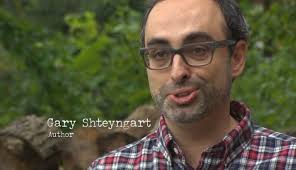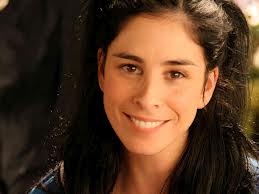Irving Howe and Hannah Arendt both published important essays in The Partisan Review. Howe published and edited the important 1953 issue of The Partisan Review where he included Saul Bellow’s monumental translation of I.B. Singer’s “Gimpel the Fool” and an important introduction on Jewishness. Arendt published essays at The Partisan Review on philosophy, literature, and politics such as “Franz Kafka, a Reevaluation,” (1944), “What is Existenz philosophy?” (1946), “The Concentration Camps”(1948), and “The Cold War and the West”(1962).
Howe first met Arendt when she was the editor of Schocken Books. Howe’s recollection of their meeting and his description of Arendt in his wonderful book, A Margin of Hope: An Intellectual Autobiography, are worth recounting as they give us something of an intellectual portrait and show us that Howe was impressed by her presence. Howe situates her in a chapter entitled “Jewish Quandries.” What’s most interesting about this placement is the fact that he discusses his literary project in Yiddish literature side-by-side with his meetings and encounters with Arendt. In her, he saw something of a secular Jewishness that he felt had died in Europe. He calls it an “idea” that he loved but, in reality, couldn’t make real because such Jewish secularism (attempted, he believed, by the movement of Yiddish theater and literature in the lower east side) was “decaying.”
Howe tells us that when he first met her, Arendt was looking for someone to do “literary chores (copy for book jackets, cleaning up translations, and so forth), and for the handy sum of $150 a month”(270). Howe was her man. And he notes that though the pay was low, it “came with the privilege of visiting Hannah at her office every week”(270). At the time, she was not well-known because she hadn’t published On Totalitarianism, but “everyone in the intellectual world respected her and some feared her”(270).
With a little dismay, Howe notes that even though Arendt “loved to ‘adopt’ people,” he was not one of the chosen”(270). He muses that he wasn’t “perhaps because I was deaf to philosophy, or had been contaminated by Marxism, or was visibly intent upon resisting her intellectual lures”(270).
But Howe notes that there was one thing she would love to discuss with him “Kafka and Brecht,” on the one hand, and “Yiddish folk tales and American politics” on the other. The confluence of the two is telling because they touch on things that meant a lot to Howe in his work on the schlemiel, Yiddish literature, modernist literature, and politics.
Howe’s description of Arendt is, in many ways, literary. Arendt had, for him, a kind of theatrical quality.
He notes that, although she was “far from ‘good looking’ in any commonplace way,” she was a “remarkably attractive person, with her razored gestures, imperial eye, dangling cigarette. ‘Szee here,’ she would declare with a smile meant both to subdue and to solace, and then she’d race off into one of her improvisations”(270).
“Mere Americans,” says Howe, were “dazzled by the immensities of German philosophy” she knew. But Howe notes that what really dazzled them was not her “thought” so much as the “style of her thinking”(270). His description of her style is worth noting, at length, because he’s trying to translate it into literature. She fills the rooms she dwells in with the “largeness of her will” and is “larger than her setting.”
She brissled with intellectual charm, as if to reduce everyone to an alert discipleship. Her voice would shift register abruptly, now stern and admonitory, now slyly tender with gossip. Whatever room she was in Hannah filled through the largeness of her will; indeed, she always seemed larger than her setting. Rarely have I met a writer with so acute an awareness of the power to overwhelm. (270)
But something was missing in this performance. He couldn’t quite grasp its “substance”:
Even while appreciating her performance, I often failed to grasp its substance.
Howe, nonetheless, tells his reader that he did learn something from his discussion with her about politics: “that politics has to be scrutinized in its own right and not just as an index of social conflict”(271).
But while she had command over thought and politics and a style that he emulated, Howe noticed that when it came to Jewishness Arendt’s attitudes were “hopelessly mixed.” And this had to do with her “hostility toward established Jewish institutions, especially Zionist ones.”
Hannah’s attitudes toward modern Jewish life, her feelings toward the Jews as they actually lived in all their frailty and imperfection, were hopelessly mixed. (271)
Howe notes how the book on Eichmann and all the attendant criticism deeply affected her. And in his reflections on her book, Howe takes the side of Norman Podhoretz who “saw Arendt’s book – rightly, I think – as an instance of that deep impulse among some Jews, especially intellectual ones, to make ‘inordinate demands…that the Jews be better than other people…braver, wiser, nobler, more dignified….But the truth is – must be – that Jews under Hitler acted as men will act when they are set upon by murderers”(275).
He notes that “such controversies will never be settled” and describes, in a sad manner, his last encounter with Arendt. At a party they shook hands, and she sharply took it away as she “turned on her heel and walked off.” The gesture was like a “wound” that remained with him:
It was the most skillful cut I have ever seen or received, and I was wounded quite as keenly as she wanted me to be. (275)
Arendt left him with a wound. And perhaps this marked his wounded sense of Jewishness as the chapter goes on to articulate.
…to be continued….








